
Jazz Style in Interior Design - Creative Legacy of the "Roaring Twenties"
Jazz Style in Interior Design - a design direction with a century-long history, suitable for creating a comfortable and relaxed atmosphere. It is most commonly found in public spaces such as clubs, bars, and theaters. Young people, creative individuals, and jazz music enthusiasts often choose this style for decorating their homes. The jazz-inspired interior appeals to those who are willing to sacrifice order and strictness in favor of freedom and bold combinations. Contrasts, ethnic elements, and other unconventional techniques help make the ambiance interesting and extraordinary.
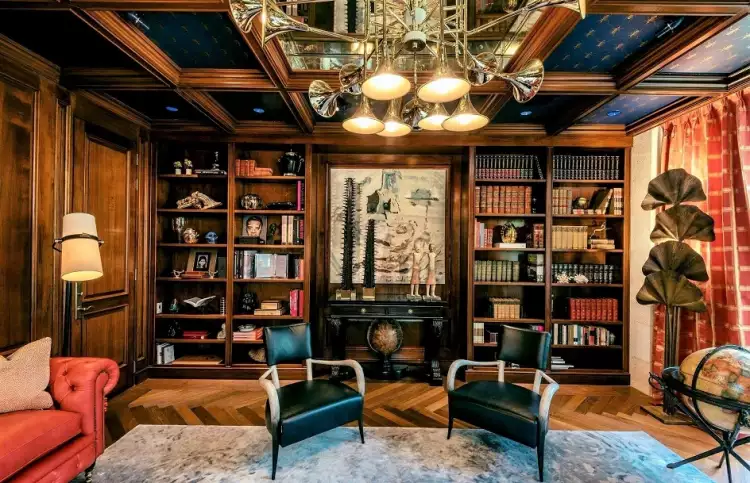 Jazz style in the interior. Interior of a Home Library in Jazz Style
Jazz style in the interior. Interior of a Home Library in Jazz Style
Jazz style in interior design leans towards open spaces and a sense of lightness, making it best suited for spacious rooms or open-plan studios. However, even a small kitchen can be designed to resemble a cozy corner in a bar where your favorite music is playing.
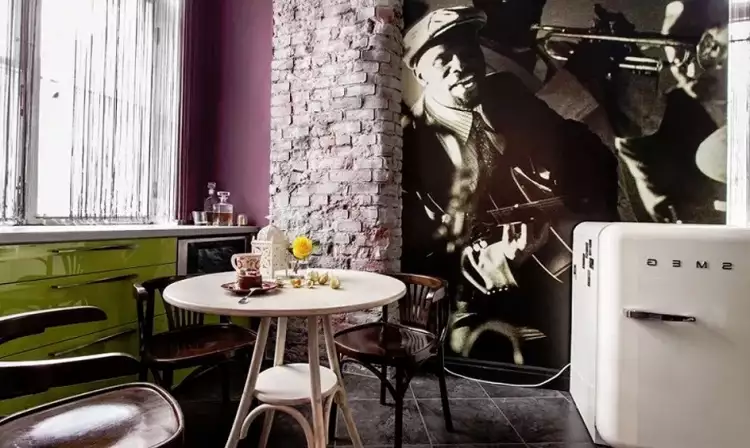 Jazz style in the interior. Interior of a Kitchen in Jazz Style
Jazz style in the interior. Interior of a Kitchen in Jazz Style
Main characteristics and features of jazz style in interior design
The jazz style helps create an interior where you want to relax and have fun with friends. It allows breaking the rules, experimenting, and combining elements from different directions. A classic leather sofa can perfectly coexist with zebra skin or Japanese prints. Such eclecticism provides ample space for creativity, but there are also some stable rules. The main characteristics of jazz style in interior design include:
- Color palette: The combination of black and white is often used in finishes, such as chessboard tiles on the floor or wallpaper patterns. Bright accents are also welcome, such as red, orange, turquoise, gold, and bronze. However, the overall atmosphere should be more restrained. Dark natural shades like wood, brick, stone, or leather add calmness and balance.
- Materials: The most popular types of flooring are wood or large tiles in dark shades. In commercial spaces, concrete is often used. The walls can be made of exposed or painted brick and other textured materials. Wooden panels or wallpapers with geometric patterns are suitable as well. Accessories often feature metal, glass, and ceramics.
- Furniture: Comfortable sofas with leather or velvet upholstery fit perfectly into the jazz style, but without an abundance of decorative cushions. Instead of a cabinet with doors, it is better to choose open shelves. The furniture should be simple, yet solid and durable. Individual pieces can belong to different styles as long as they harmonize well together. The common feature can be the material, often dark wood and leather.
- Musical associations: Perhaps the most recognizable feature of jazz interior is expressive reminders of the corresponding musical style. A grand piano in the corner, a saxophone on the wall, or replicas and stylized instruments are commonly found. Playing them is not necessary; one can simply enjoy the elegant forms, the beauty of wood, and the gleams of metal. Decorations in the form of vinyl records or concert posters are also used.
- Lighting: The main source of light is chandeliers and wall sconces with metallic elements. They can be wrought iron or styled in an industrial design. Lamps similar to those used in concert halls are suitable as well. Floor lamps help create a cozy and intimate atmosphere in the evening. Another light source can be a real or decorative fireplace with a brick lining.
- Textiles: In general, this style gravitates towards simplicity, but elements of luxury are appropriate in the form of beautiful curtains with tassels or an expensive carpet. Sometimes, animal fur rugs are placed on the floor. In other cases, textiles are rarely used and do not attract much attention. Bedspreads, pillows, and upholstery can be solid-colored, with subtle stripes or checks.
- Decor: A good idea for decoration is antique items that can be purchased at an antique shop. They usually fit seamlessly into the atmosphere, even if it's a vintage bicycle or a advertising sign. Black and white photos are often displayed on the walls, portraying family portraits or famous jazz musicians. A mirror in an interesting frame and other reflective surfaces can also serve as suitable decor.
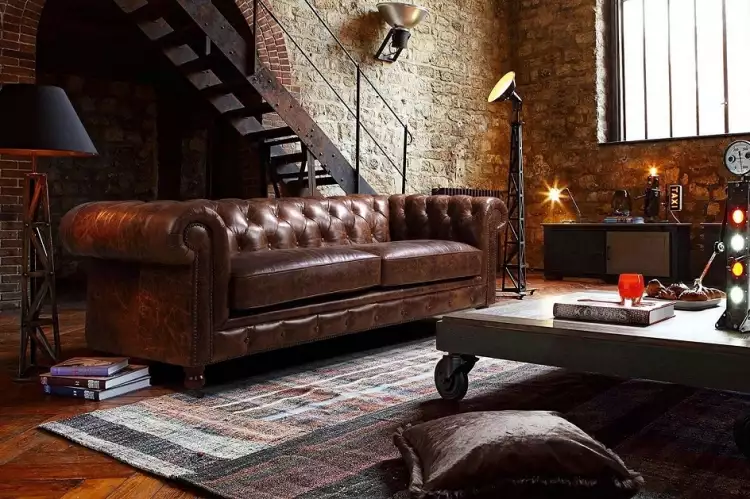 Jazz style in the interior. Interior of a Living Room in Jazz Style
Jazz style in the interior. Interior of a Living Room in Jazz Style
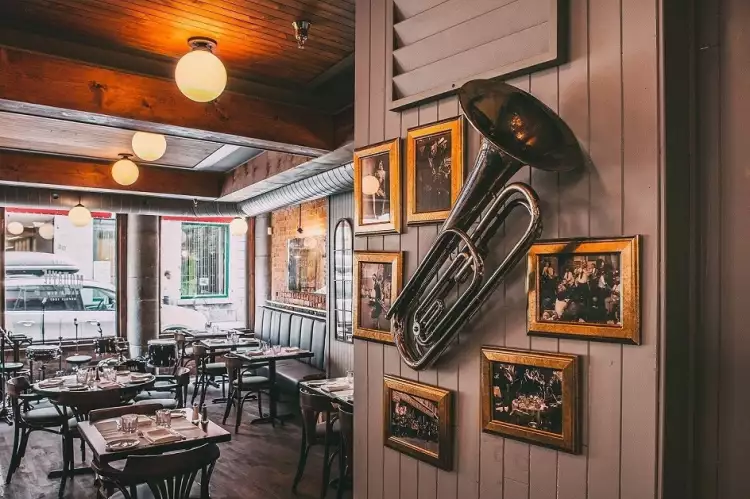 Jazz style in the interior. Cafe interior with jazz style wall decor
Jazz style in the interior. Cafe interior with jazz style wall decor
History of jazz style in interior design
The entire jazz design traces its roots back to the period when the musical style bearing its name emerged. This happened at the turn of the 19th and 20th centuries in the African-American neighborhoods of New Orleans. The cultural movement was shaped under the influence of blues, ragtime, military bands, and West African ethnic motifs. By the 1920s, known as the "Roaring Twenties," jazz rapidly gained popularity first in America and then in Europe. The history of this style in interior design began during an optimistic era between the two world wars, when people traveled extensively, danced, drew inspiration from scientific and technological progress, and believed in a bright future.
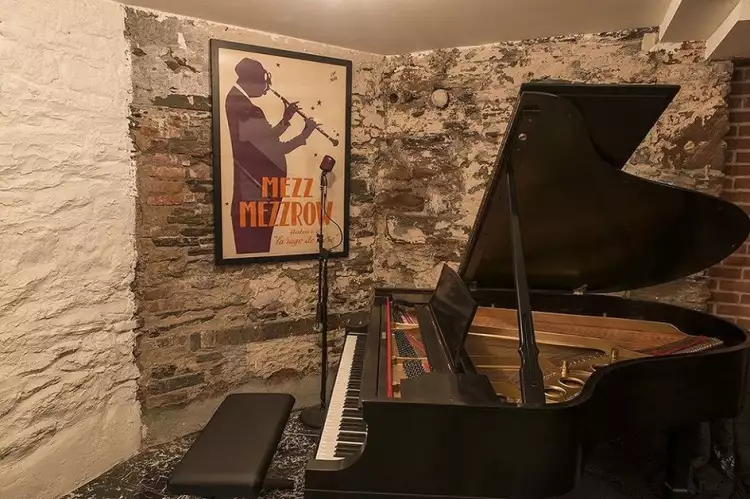 Jazz style in the interior. Piano and poster typical of jazz interior
Jazz style in the interior. Piano and poster typical of jazz interior
Jazz became such a significant cultural phenomenon that it soon transcended the realm of music. Initially, it found expression in graphic design: new approaches were sought for album covers, posters, thematic magazines, and newspapers. Then this style manifested itself in distinctive interiors: first in establishments where music was performed, and later in homes and apartments. Interestingly, this process was facilitated by the Prohibition era in the United States. Despite the bans, people wanted to have fun and organized private parties. The ambiance resembling a nightclub or bar was perfect for this purpose. The popularity of such music and dance parties was further fueled by the spread of radio.
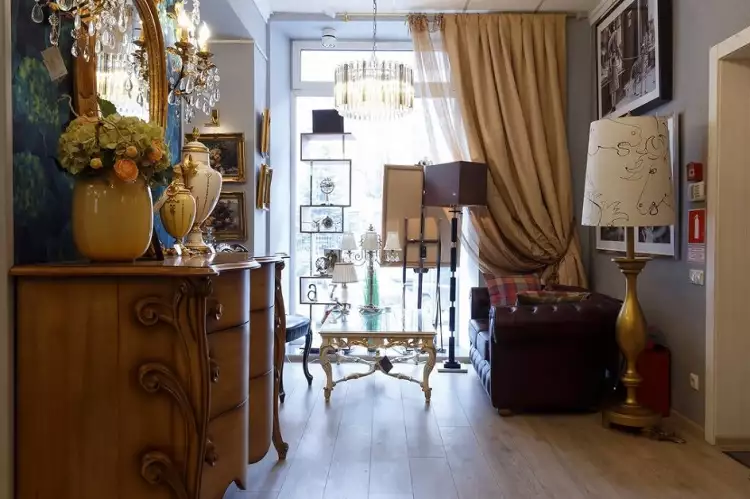 Jazz style in the interior. Use of floor lamps and monochrome photographs in jazz style
Jazz style in the interior. Use of floor lamps and monochrome photographs in jazz style
Even during the years of the Great Depression, World War II, and the challenging post-war period, when the golden age of jazz had long passed, the inspired interior style remained in demand. Its appeal did not wane thanks to cinema and the works of famous musicians such as Frank Sinatra, Joe Williams, and Ray Charles. Nowadays, this style can be easily encountered in the design of nightclubs, restaurants, hotels, beauty salons, and offices. It is less commonly used in residential interiors, but there are occasional surges in popularity. They are usually triggered by movies dedicated to the 1920s era or the music prevalent at that time. For example, interest in jazz style increased after the release of films like "The Great Gatsby" and "La La Land".
Jazz style in interior design was shaped during the flourishing period of Art Deco and borrowed many elements from this movement. The combination of black and white, color contrasts, geometric patterns and shapes, and a fondness for mirrored surfaces are among their shared characteristics. However, there are also differences. Jazz interiors are typically simpler and somewhat rougher, with less opulence. Brickwork, industrial lighting fixtures, and sturdy furniture align it with loft aesthetics. Additionally, this style is more eclectic, embracing unusual combinations and improvisation, which are crucial in music. However, it requires a designer with good taste and the ability to harmoniously blend diverse objects, including vintage items and musical instruments.
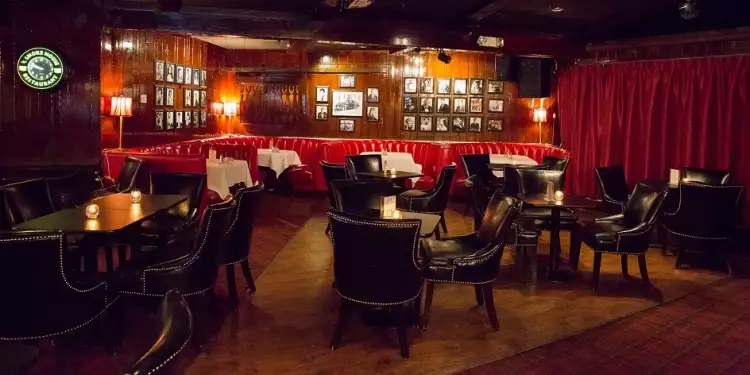
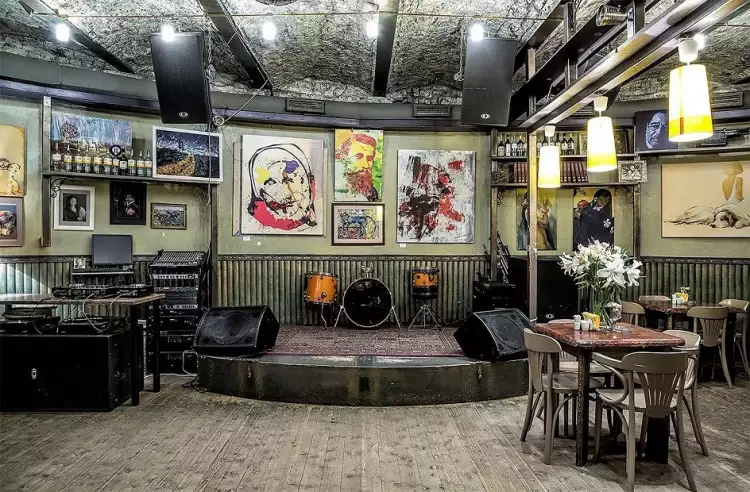
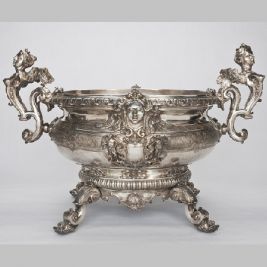 English Silver Tableware - History, Fashion, and Styles
English Silver Tableware - History, Fashion, and Styles 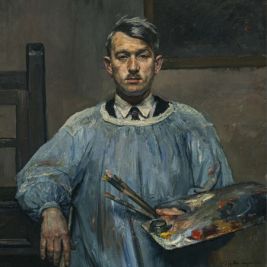 A colourful farmer Thomas Baumgartner
A colourful farmer Thomas Baumgartner  Architecture is an ancient art of creating magnificent monumental masterpieces
Architecture is an ancient art of creating magnificent monumental masterpieces  Design is a captivating process of artistic planning
Design is a captivating process of artistic planning  The painting "The Umbrellas" by Pierre-Auguste Renoir is a masterfully created illusion of black color
The painting "The Umbrellas" by Pierre-Auguste Renoir is a masterfully created illusion of black color  The Return of Nature: Embracing Nature Renewal Art in 2024
The Return of Nature: Embracing Nature Renewal Art in 2024 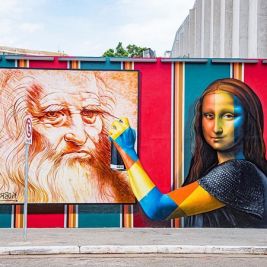 Mural - monumental urban art of immense scale
Mural - monumental urban art of immense scale  Ecole de Paris and other masters online auction on drouot.com, until 5 dec 2023
Ecole de Paris and other masters online auction on drouot.com, until 5 dec 2023  Current Popular Items in the Antique Market
Current Popular Items in the Antique Market  Tempera is a painting technique with a history spanning thousands of years
Tempera is a painting technique with a history spanning thousands of years